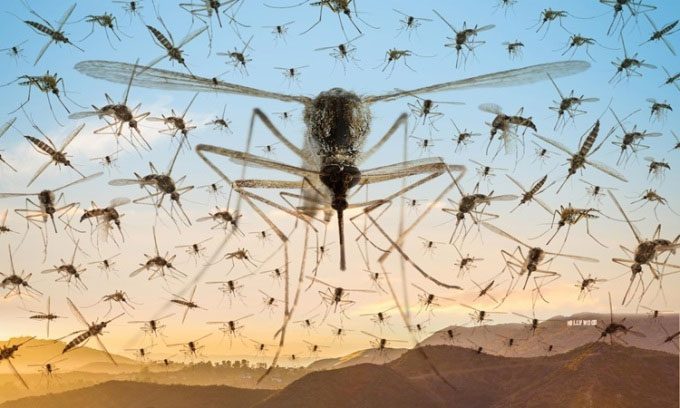Los Angeles Authorities Use Sterilized Male Mosquitoes to Combat Disease-Carrying Population
In Los Angeles, a new weapon is being added to the fight against mosquitoes: sterilized male mosquitoes, according to NBC. On May 2, the Greater Los Angeles County Vector Control District launched a pilot program releasing tens of thousands of lab-raised mosquitoes into the local environment. All of these mosquitoes are male and have been sterilized through radiation. Authorities hope they will find mates in the wild and fertilize female mosquitoes with ineffective sperm, rendering the resulting eggs unviable.

Sterilized male mosquitoes will render the laid eggs unviable. (Photo: Los Angeles Times).
The target of the experts is the Aedes aegypti mosquito. This species began proliferating in Los Angeles in 2014 and has evolved to target humans. “Thousands of years ago, a strain of Aedes mosquitoes began to live closer to humans, starting to inhabit homes and bite people,” said Daniel Hahn, a professor in the Department of Entomology and Nematology at the University of Florida. “They are a pesky and aggressive biting insect that will bite you all day.”
Aedes mosquitoes thrive in backyards and breed in small containers like bottle caps and dog bowls. They can carry infectious diseases such as yellow fever, Chikungunya, Zika, and dengue fever, according to Susanne Kluh, the director of GLACVCD.
On May 2, GLACVCD released approximately 20,000 sterilized male mosquitoes, which were dyed to glow under ultraviolet light, as part of the final test of the pilot program. Male Aedes mosquitoes do not bite humans, so experts say the program poses minimal risk to people. Next month, GLACVCD plans to release 7 to 10 sterilized male mosquitoes for each wild male mosquito living in the target area of Sunland-Tujunga in Los Angeles. The number could increase to 60,000 mosquitoes per week.
This measure is an example of how humans deploy new technology to combat the spread of invasive mosquitoes and the diseases they carry, especially in the context of climate change, global trade, and urbanization pushing pest species into new territories. Aedes mosquitoes are not indigenous to the United States but have existed in some regions for hundreds of years.
In recent years, researchers have warned that higher temperatures due to climate change will expand the habitat range of mosquitoes. This is already happening in Southern California. The state recorded its first two cases of dengue fever last year, indicating that local mosquitoes are transmitting the virus. The Southern California region has also seen urban and suburban development, contributing to the expansion of habitats for Aedes mosquitoes.
Sterilized male mosquitoes are raised in laboratories in Kentucky but are developed from eggs sourced from the Los Angeles area. Each week, GLACVCD plans to hatch mosquitoes in small boxes and then irradiate them using specialized equipment. After being released, irradiated mosquitoes typically fly only about 150 meters, according to Kluh.
The radiation affects the chromosomes in the mosquito cells, preventing them from reproducing while still allowing the individuals to fly and perform many biological functions at nearly normal levels. Kluh noted that the mosquitoes are not radioactive and do not pose a risk to the community. However, he acknowledged that expanding the program throughout Los Angeles County remains a challenge.


















































